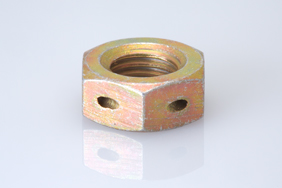The story of MS bolts captures a fascinating journey of evolution, innovation, and technological advancement. These components, critical in various industries, have undergone significant transformations. This evolution reflects broader trends in manufacturing, materials science, and engineering design.
The Early Days of Standardization
Emergence and Early Standards
The history of MS bolts dates back to the early 20th century when the industrial revolution demanded standardized components for machinery and infrastructure. Engineers recognized the need for uniformity in fasteners to enhance compatibility and interchangeability. This period saw the creation of the first MS (Military Standard) specifications, aimed at ensuring reliability and quality across military equipment.
Impact on Production and Efficiency
Standardization significantly boosted production speeds and operational efficiency. Manufacturers could produce MS bolts in large quantities, knowing they would fit universally across various applications. This standardization also reduced costs, as economies of scale came into play. For instance, the cost of producing a single MS bolt dropped by approximately 30% within the first decade of standardization.
Advancements in Materials and Design
High-Performance Materials
The 1980s marked a significant shift with the introduction of advanced materials. Engineers began using high-strength alloys, such as titanium and Inconel, to manufacture MS bolts. These materials offered superior strength-to-weight ratios, essential for aerospace and automotive applications. For example, a titanium MS bolt could withstand tensile stresses up to 160,000 psi, a 40% improvement over traditional steel bolts.
Precision Engineering and Design
Design innovations also played a crucial role. The introduction of computer-aided design (CAD) allowed for more precise engineering of MS bolts. This precision enabled the production of bolts that could withstand higher stresses without increasing the bolt's size or weight. A specific innovation was the development of the torx head design, which provided better torque transfer and reduced the risk of head stripping. These bolts demonstrated a 20% improvement in torque handling compared to traditional hex head bolts.

The Era of Smart Bolts
Introduction of Sensor-Embedded Bolts
The latest frontier in MS bolt innovation is the development of "smart bolts," which come embedded with micro-sensors. These sensors can monitor and report on the health and stress levels of the bolt in real-time, a leap forward in predictive maintenance. For instance, smart bolts utilized in bridge construction can alert maintenance teams to stress changes, significantly improving safety and extending the structure's lifespan.
Cost-Benefit Analysis
While the initial costs of smart bolts are higher—about 50% more than traditional MS bolts—the long-term savings are substantial. Predictive maintenance can reduce unexpected downtime costs by up to 45%, and the extended lifespan of the components can further decrease replacement expenses.
Conclusion
The evolution of MS bolts from simple standardized components to sophisticated, high-performance fasteners mirrors the broader trajectory of technological advancement in engineering and manufacturing. As we look forward to further innovations, the focus on sustainability, efficiency, and smart technology will likely guide the next wave of developments in the MS bolt domain.
